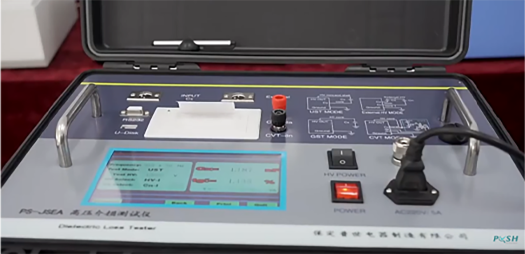 English
English



-
 Afrikaans
Afrikaans -
 Albanian
Albanian -
 Amharic
Amharic -
 Arabic
Arabic -
 Armenian
Armenian -
 Azerbaijani
Azerbaijani -
 Basque
Basque -
 Belarusian
Belarusian -
 Bengali
Bengali -
 Bosnian
Bosnian -
 Bulgarian
Bulgarian -
 Catalan
Catalan -
 Cebuano
Cebuano -
 China
China -
 China (Taiwan)
China (Taiwan) -
 Corsican
Corsican -
 Croatian
Croatian -
 Czech
Czech -
 Danish
Danish -
 Dutch
Dutch -
 English
English -
 Esperanto
Esperanto -
 Estonian
Estonian -
 Finnish
Finnish -
 French
French -
 Frisian
Frisian -
 Galician
Galician -
 Georgian
Georgian -
 German
German -
 Greek
Greek -
 Gujarati
Gujarati -
 Haitian Creole
Haitian Creole -
 hausa
hausa -
 hawaiian
hawaiian -
 Hebrew
Hebrew -
 Hindi
Hindi -
 Miao
Miao -
 Hungarian
Hungarian -
 Icelandic
Icelandic -
 igbo
igbo -
 Indonesian
Indonesian -
 irish
irish -
 Italian
Italian -
 Japanese
Japanese -
 Javanese
Javanese -
 Kannada
Kannada -
 kazakh
kazakh -
 Khmer
Khmer -
 Rwandese
Rwandese -
 Korean
Korean -
 Kurdish
Kurdish -
 Kyrgyz
Kyrgyz -
 Lao
Lao -
 Latin
Latin -
 Latvian
Latvian -
 Lithuanian
Lithuanian -
 Luxembourgish
Luxembourgish -
 Macedonian
Macedonian -
 Malgashi
Malgashi -
 Malay
Malay -
 Malayalam
Malayalam -
 Maltese
Maltese -
 Maori
Maori -
 Marathi
Marathi -
 Mongolian
Mongolian -
 Myanmar
Myanmar -
 Nepali
Nepali -
 Norwegian
Norwegian -
 Norwegian
Norwegian -
 Occitan
Occitan -
 Pashto
Pashto -
 Persian
Persian -
 Polish
Polish -
 Portuguese
Portuguese -
 Punjabi
Punjabi -
 Romanian
Romanian -
 Russian
Russian -
 Samoan
Samoan -
 Scottish Gaelic
Scottish Gaelic -
 Serbian
Serbian -
 Sesotho
Sesotho -
 Shona
Shona -
 Sindhi
Sindhi -
 Sinhala
Sinhala -
 Slovak
Slovak -
 Slovenian
Slovenian -
 Somali
Somali -
 Spanish
Spanish -
 Sundanese
Sundanese -
 Swahili
Swahili -
 Swedish
Swedish -
 Tagalog
Tagalog -
 Tajik
Tajik -
 Tamil
Tamil -
 Tatar
Tatar -
 Telugu
Telugu -
 Thai
Thai -
 Turkish
Turkish -
 Turkmen
Turkmen -
 Ukrainian
Ukrainian -
 Urdu
Urdu -
 Uighur
Uighur -
 Uzbek
Uzbek -
 Vietnamese
Vietnamese -
 Welsh
Welsh -
 Bantu
Bantu -
 Yiddish
Yiddish -
 Yoruba
Yoruba -
 Zulu
Zulu
Exploring BDV Test Applications in Transformer Technology and Performance Evaluation
Understanding BDV Test in Transformers
In the realm of electrical engineering, particularly in the maintenance of transformers, the BDV test, or Breakdown Voltage test, plays a crucial role in ensuring the operational integrity and longevity of transformer insulation systems. This test assesses the dielectric strength of insulating liquids used in transformers, significantly affecting the performance and reliability of electrical equipment.
Transformers are essential components in electrical power systems, serving to transfer electrical energy between two or more circuits through electromagnetic induction. However, the efficiency of a transformer is heavily reliant on its insulating materials. Over time, these insulators can degrade due to factors like moisture, contamination, and thermal stress, which can lead to electrical failures and unexpected outages. Thus, regular testing is imperative.
Understanding BDV Test in Transformers
Understanding the significance of the BDV test involves a closer look at the consequences of inadequate insulation. When breakdown occurs, it can lead to short circuits, transformer overheating, and consequently, failure of the entire electrical system. These failures not only pose safety hazards but also result in significant economic losses due to downtime and repairs. Regular BDV testing, therefore, becomes an integral part of preventative maintenance practices.
bdv test in transformer

The BDV test procedure is fairly straightforward, but it requires strict adherence to safety measures and standards. Testing should be conducted in a controlled environment, away from moisture and other contaminants. The equipment should be calibrated correctly to ensure accurate readings. Additionally, it’s essential to consult relevant standards such as ASTM D1816, which provides guidelines for testing the dielectric strength of insulating liquids.
In practice, results from the BDV test inform maintenance strategies. If the breakdown voltage is below a certain threshold, typically around 30 kV for new insulating oils, it indicates the necessity for actions such as filtration or replacement of the oil. Regular monitoring allows maintenance teams to track changes over time, helping to predict when problems might arise, thereby enabling timely interventions.
The role of technology in the BDV testing process cannot be understated. Advances in testing equipment and methods have led to more accurate and efficient BDV assessments. Automated testing devices have reduced human error and have enabled more consistent results. Furthermore, integrating these tests into condition-based monitoring systems enhances the predictive maintenance capabilities of electrical utilities, allowing for more proactive management of transformer health.
Additionally, the BDV test has applications beyond transformers; it is also relevant in assessing the condition of capacitors, voltage regulators, and other electrical components that rely on insulating fluids. By understanding the implications of dielectric breakdown across various applications, engineers can better safeguard their equipment and ensure a stable power supply.
In conclusion, the BDV test is a vital diagnostic tool in the maintenance and management of transformers. By regularly assessing the dielectric strength of insulating fluids, organizations can prolong the lifespan of their electrical assets, minimize risks of failure, and optimize operational efficiency. Given the increasing demand for reliable energy solutions, understanding and implementing robust testing measures like the BDV test is more critical than ever. In the ever-evolving landscape of electrical engineering, staying informed and prepared will allow for sustainable growth and development in energy infrastructure.
-
Ensuring SF₆ Gas Safety: Introducing PUSH’s Integrated SF₆ Analyzer for Dew Point, Purity, and Decomposition MonitoringNewsJul.10,2025
-
Exploring the Main Types of Industrial Endoscopes and Their Applications Across IndustriesNewsJul.04,2025
-
Testing Equipment Industry Sees Major Advancements in 2025: Smart & Precision Technologies Lead the WayNewsJun.06,2025
-
Applications of Direct Current Generators in Renewable Energy SystemsNewsJun.05,2025
-
Hipot Tester Calibration and Accuracy GuidelinesNewsJun.05,2025
-
Digital Circuit Breaker Analyzer Features and BenefitsNewsJun.05,2025



